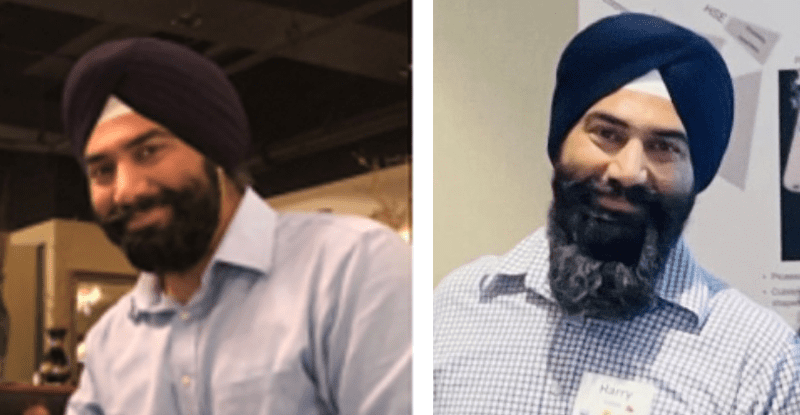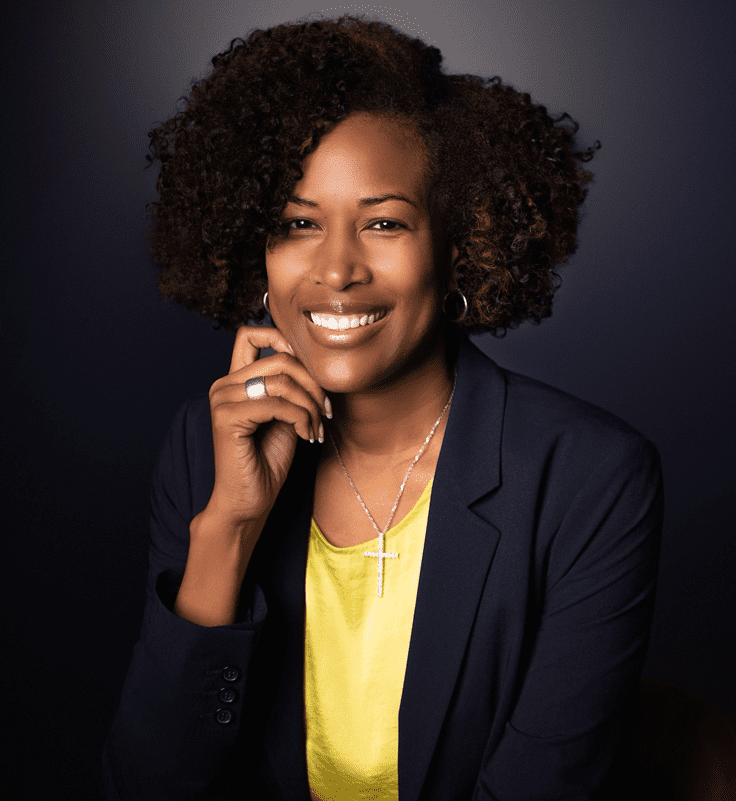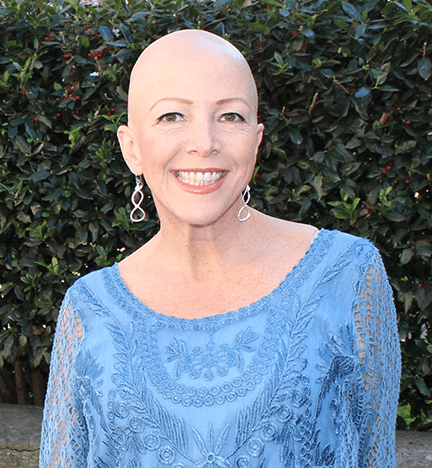For those of you unfamiliar with these lyrics from a 1971 song called Signs by the Five Man Electrical Band, the missing word is “Long.” The lyrics discouraged people with long hair from applying for a job. I’ve left it blank because five decades later, for some of our society, not much has changed. And, for others, the list of adjectives has arguably expanded to include dreadlocks, gray, hijab, turban and other non-mainstream descriptions of how we present our heads – none of them having to do with our ability to perform our jobs.
Harry Saluja, who is a strategic portfolio manager for a multinational energy giant, belongs to the Sikh faith (pronounced “sick” not “seek”). One of the tenets of his faith requires that he not cut his hair – ever. Men manage it by wrapping it under stylish, colorful turbans. They tie their beards in an artistic knot under the chin in such a tidy fashion that the beard appears to have been trimmed. Colorful turbans and full beards are a common sight in India, but not so much in the West.

During Saluja’s career, one of his well-meaning mentors suggested that if he cut his hair, and lose the turban, he would have much more career success. He declined. But many of his Sikh friends acquiesced and cut their hair. No doubt a difficult decision, requiring them to reflect on their authenticity. Employees should not have to make these compromises.
Authenticity also comes in many colors, literally. Blue and purple hair dye are popular these days, as is a yellow streak in the hair of someone with naturally black hair. Sometimes we wonder, how serious can they be when they seem to be plucking colors from a rainbow? It should not be a consideration for hiring or promotion. Some cultural norms pressure people to dye their hair as they grow older. An associate shared with me that she dyes her hair for the sole purpose of continuing to be able to compete as she ages. Interestingly, some of the strongest voices reinforcing the notion that women must dye their hair until they die are other women.
Lahaja Furaha, who leads DEI culture change for the Washington Post was in her early 20s when her hairdresser noticed her first strands of gray hair. “It’s aging you,” was a common refrain from other women at the hair salon. “I remember leaving the salon, driving down the street, and literally yanking out every strand I could find and letting the wind take them away.”

Over the next several decades she continued to dye her hair because that was the image she wanted to see reflected back at her in the mirror. Her community – her colorist and her friends – reinforced her decision, telling her, “Going gray will age you.” But, at some point, after years of dying and countless hours at the salon, she decided to experiment with letting her natural color emerge. At first, she sported just a shock of silver hair in the front, but eventually grew it all out. Now, she can’t go a day without receiving compliments from friends and strangers alike. She knows that ditching the dye was the best hair decision she’s made. And, to be clear, “It’s silver not gray.”
Interestingly, this month, her employer ran an article highlighting the trend in Brazil. “[In] the country that leads the world in plastic surgery, some prominent women are embracing gray hair.”
With most Black women, the issue isn’t hair color; it’s curliness. Curliness is not the norm in a Eurocentric culture. The natural hair of most Black women and men is curly. Very curly. Trying to manage it in a culture where the majority of almost every other race has straight hair has been a long history of scalp abuse accompanied by cussing and prayer. It’s not just an issue of fitting in. It’s also about being accepted for wearing cultural hairstyles such as dreadlocks. But to do so comes with risk, not just from a fashion and “acceptance” perspective; hairstyle discrimination is still legal.
As I wrote in my May 10, 2022, op-ed for the Washington Post:
On March 21, 2022, the U.S. House of Representatives passed a bill to make it unlawful to discriminate because of hairstyle. Next, the bill will go to the Senate where measures to pass a similar act have previously failed. If approved by the Senate, it would ban race-based hair discrimination in employment and against those participating in federally assisted programs, housing programs, and public accommodations. Eighteen states have either passed a similar law or are considering it. But there is no guarantee that all 50 states will pass such a law. Two states have seen fit to pass laws preventing discrimination based on hair styles associated with race. And legislation is currently pending in seven more.
To those unaware or not impacted by this [harassment and discrimination] the bill may seem trivial or concocted by the “woke” culture. It is not. Just one example is the case of Chastity Jones. In 2010, she was fired from her job because she wore her hair in a short, dreadlock style. She sued her former employer, lost, and appealed to the Supreme Court where she lost again. The Supreme Court upheld the lower court ruling, arguing that a hairstyle is not inevitable and immutable just because it is a reasonable result of hair texture.
Or Kristi Kennebrew, a recruiter for Microsoft, who in March posted on LinkedIn about an email from a troll who told her to “tone it down, make it flat… or cut it all off.”
Or the case of Deanna and Mya Cook, Black twins who, in 2017, were given detention and threatened with suspension for wearing braids at Mystic Valley Regional Charter School which, at the time, the school’s dress code policy prohibited.
Fortunately, most of us aren’t waiting for laws to be passed, and many large organizations are embracing natural hairstyles.

Alta Mathews is a senior HR leader for a multinational energy giant. Just a few years ago on days when she would break from the norm of wearing long extensions that reflected a straight, Eurocentric hair style, she would receive passive-aggressive comments about how “exotic” her hair style was a subtle reminder that she was not wearing a corporately acceptable hairstyle. Today, she almost exclusively shows off her luxuriously natural head of hair or braids and receives nothing but compliments for both.
At least they have hair to braid… All genders struggle with hair loss. My “natural” look would be a half-bald head, and very white hair in the shape of a cul-de-sac. I manage it with a razor and a steady hand. For others, it’s creative comb-overs. But, for women, it’s a completely different issue, one that can challenge how feminine they feel.
Laura Duksta, a New York Times best-selling author, lost all of her hair at the age of 11, to a condition called alopecia areata. She wore wigs for 19 long years, certain there was something unacceptable and terribly wrong with her bald head. Shortly after having the idea for her first book, I Love You More, she decided, as she put it, to “set my wigs and myself free,” having what became known as her “coming out party” as The Bald Chick. It was challenging at times with well-meaning older women saying, “You should wear a wig, honey,” being called “sir” by cashiers, or often being mistaken for a cancer patient. Slowly, as Duksta gained confidence and learned to embrace her bald head, she found others did as well. She now sees that it was an opportunity to be and love herself. Once she did, she found people offering compliments about her strength and beauty.

For Duksta, it’s been a lesson in authentic power. “When I wasn’t comfortable with myself, people around me weren’t either. As I embraced my bald head and being myself, it became a non-issue, or a sign of strength, truth and beauty.”
Several years ago, I wrote a similar article about hairstyle and featured Harry Saluja. When I caught up with him for this article, he shared that the article and subsequent conversations got him comfortable with sharing his authentic self. So, he decided to open his beard, AND he has since received a promotion – open beard and all!
It is indeed absurd in this day and age to be concerned about how someone chooses to wear their hair. We are progressing, in part thanks to the internet, and there is hope that this will be a non-issue for future generations.
As with any conversation where there is honest curiosity and positive intent, it is okay to be direct. You can ask, “I’m curious about your hair/headpiece/turban/accent/culture. Are you comfortable sharing? I understand if you’re not.” But if you’re feeling judgmental and thinking the other person is wrong because you don’t agree with how they present themselves, you may want to keep your thoughts and questions to yourself. Or if you are thinking that they cannot be successful because of how they physically show up, consider whether you are trying to save them from someone else’s biases… or your own.
Perhaps it’s time to update the song lyrics to “Long-bearded, high performers need apply!”
Lee Jourdan is Chevron’s former global chief diversity and inclusion officer and former vice president commercial and business development for Chevron’s IndoAsia and Asia South business units. He has been published by The Harvard Business Review, Washington Post, and interviewed by SHRM and Pulitzer Prize winner Daniel Yergin on DEI. Jourdan is co-author of From Shoeshine to Star Wars and was recognized by Business Insider in 2020 as one of 100 people transforming business in North America. Today, he is a director on the boards of PROS Holdings (NYSE: PRO) and the nonprofit SEARCHHomeless Services, an advisory board member at Pulsely Inc., and Ally Energy, and a special advisor to FTI Consulting, author and keynote speaker.
Oil and gas operations are commonly found in remote locations far from company headquarters. Now, it's possible to monitor pump operations, collate and analyze seismic data, and track employees around the world from almost anywhere. Whether employees are in the office or in the field, the internet and related applications enable a greater multidirectional flow of information – and control – than ever before.



